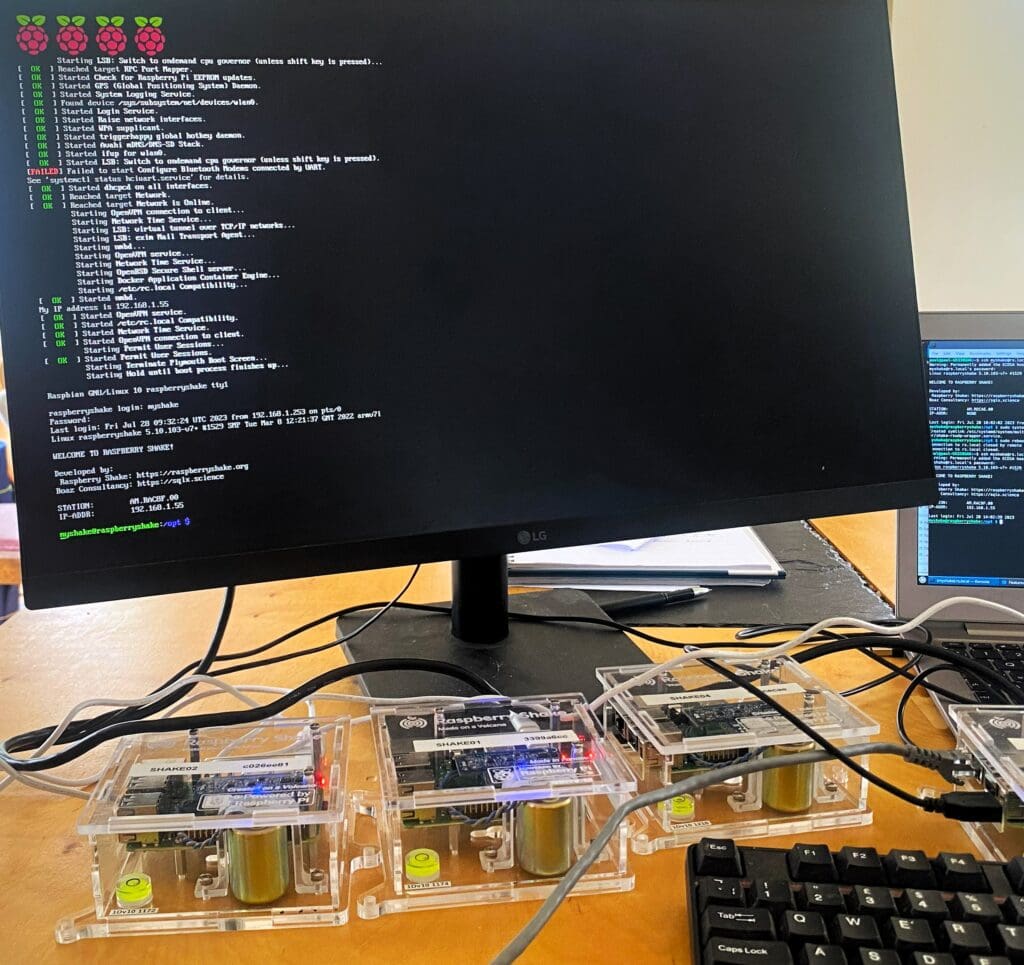REVOLUTIONARY new seismology software will shake up the way organisations measure footfall and have a positive impact on town centre regeneration.
Menter Môn trialled the innovative Raspberry Shake wireless technology as part of the wider Patrwm Smart Places project at last summer’s National Eisteddfod, held in Boduan, Gwynedd.
Created by software development pioneers Kodergarten, sensors were placed in strategic areas locally, including the neighbouring towns and villages of Abersoch, Nefyn, Pwllheli, Y Ffor and Y Maes at the Eisteddfod itself.
Ahead of the country’s first ever Smart Towns Cymru conference in Wrexham this Friday (March 15), results have revealed significant increases in activity at peak times during the week-long event, and insights into footfall and traffic flow statistics in the towns and villages that surrounded the Eisteddfod site.
Kodergarten co-founder Paul Sandham said processing WiFi sensor and seismometer data – while adhering to GDPR rules – has demonstrated the viability of this approach and helped to deliver more accurate information about a place.
“Using innovative and low-cost technologies, we were able to produce more accurate footfall data which demonstrated how many people were at the Eisteddfod and in surrounding communities whilst at the same time delivering real-time data on traffic volumes at key locations,” he said.
“Going forward that will help influence the decision-making process for event organisers and nearby communities, information that could play a key part in helping to regenerate our high streets and town centres.”
Paul added: “We used microseismology to do this – recording and processing data derived from tiny vibrations in the ground – and that allowed us to capture data without ‘tracking’ anyone.
“It also gave an insight and real confidence in the numbers obtained via Wi-Fi sensors. This was a trial of the equipment we hope to deploy to build confidence in the quality of data – there is so much more we can do with this technology.
“This was a fantastic exercise for Menter Môn and ourselves to work in collaboration, and for us as a company looking for future investment it demonstrates that by using seismometer sensors, we can produce distinct and valid patterns of visitor behaviour, and traffic flow.”

During the trial, the Patrwm system processed a sliding 10-minute window of data every 30 seconds, which meant near real-time information was available for analysis. This innovative and scalable data pipeline now processes all sensor information on the Patrwm database.
Their report also revealed the two most popular areas during the week outside of the Eisteddfod were the predominantly Welsh-speaking villages of Nefyn and Aberdaron, and delays were minimal at peak times which indicates traffic flow and management implemented by Gwynedd Council was working well, despite the large number of vehicles.
Launched in 2021, the Trefi Smart Towns Cymru project, funded by the Welsh Government and delivered by Menter Môn, has promoted the use of technology and data to rejuvenate high streets all over Wales and encourage data driven decision making.
Project Manager Kiki Rees-Stavros said: “This technology complements existing Wi-Fi provision in north west Wales and allows for incredibly accurate figures. It adds a lot of value for local authorities and town planners, and anyone wanting to garner this information at an affordable cost.
“This is a Welsh solution to what is a global issue, so we are very proud as an organisation to have worked with Kodergarten on this initiative.”

